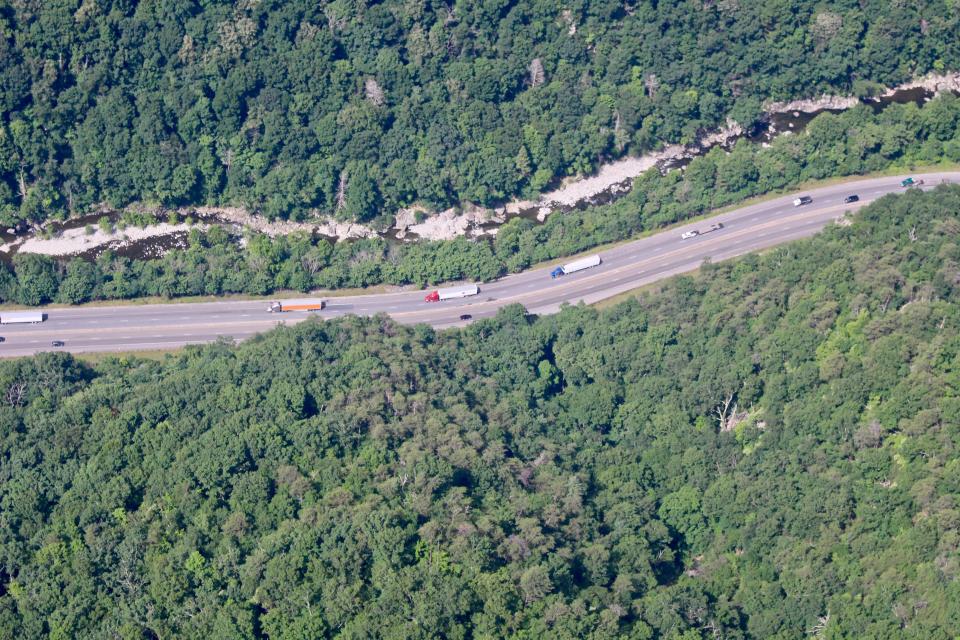A lot more than cars and trucks traverse ‘The Gorge’ | Sam Venable
ALONG THE INTERSTATE 40 GORGE — If you’ve ever driven this twisting, heart-pounding, 28-mile stretch of highway, particularly during summer, you know it’s packed with travelers.
But if you think “The Gorge” is harrowing enough inside of a car on east- and west-bound lanes, imagine trying to cross it going north or south — alone, without the protection of a vehicle, and on foot.
Or four feet, as the case may be.
Wildlife has been traversing these mountains long before development of the internal-combustion engine, let alone the interstate highway system. But now, these animals and motor vehicles are literally on a collision course.

In the past 1½ decades, traffic through the Gorge has increased 43%. At the same time, state and federal restoration efforts for deer, bear and elk have sent their numbers soaring.
“Highway or no highway, animals are going to go where they want to go,” says Jeff Hunter, senior program manager for the National Parks Conservation Association in Asheville, North Carolina. “It’s part of their primal urge to find mates, food and quality habitat. Unfortunately, many won’t make it across.”
It’s sad enough when, say, an 18-ounce squirrel gets flattened while attempting to dodge cars and trucks hurtling along at 55 mph and above. So imagine what happens when the same occurs with a 150-pound deer, a 200-pound bear or a 900-pound elk.
According to Frances Figart, director of Creative Services for the Gatlinburg-based Great Smoky Mountains Association, 81 bears were killed along the Gorge from fall 2018 through 2021 alone.
Ben Prater of Asheville, Southeast program director for the environmental group Defenders of Wildlife, said these incidents, nationwide, cost $12 billion annually. The average vehicle damage for a deer collision is $6,000, he noted. For an elk, it can be double, even triple.
Help is on the way. Safe Passage, a coalition of transportation and wildlife officials and conservation organizations, is working on wildlife-friendly highway redesigns at five sites.
One recently was completed at Harmon Den. Tracy Davids from Defenders of Wildlife says two more are underway: the high bridge over White Oak Road and Jonathan Creek, and the low bridge over White Oak Road.
These projects involve everything from “bench” paths under bridges, larger culverts, fencing up to 10 feet high, one-way openings to allow animals to get off the highway, and cattle guards to keep deer and elk off exit and entry ramps.
This isn’t new work, just for the sake of animals. The sites already were due for repair and replacement. “Safe passage” designs simply are being incorporated. That’s what I call a win-win for all Gorge travelers.
Sam Venable’s column appears every Sunday. Contact him at sam.venable@outlook.com.
This article originally appeared on Knoxville News Sentinel: Sam Venable: A lot more than cars and trucks traverse ‘The Gorge’

